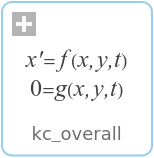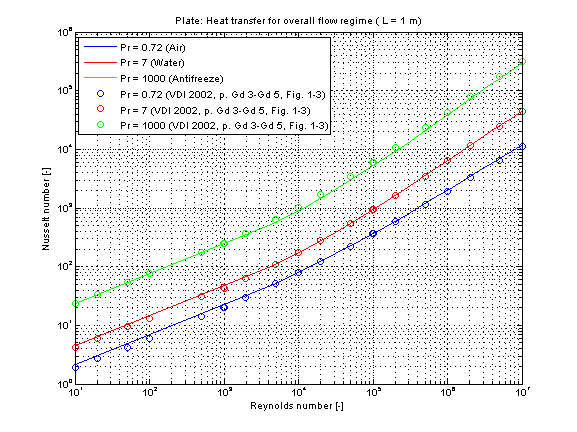WOLFRAM SYSTEM MODELER
kc_overall |
|
Wolfram Language

SystemModel["Modelica.Fluid.Dissipation.Utilities.SharedDocumentation.HeatTransfer.Plate.kc_overall"]

Information
This information is part of the Modelica Standard Library maintained by the Modelica Association.
Calculation of the mean convective heat transfer coefficient kc for a laminar or turbulent fluid flow over an even surface.
Functions kc_overall and kc_overall_KC
There are basically three differences:
- The function kc_overall is using kc_overall_KC but offers additional output variables like e.g. Reynolds number or Nusselt number and failure status (an output of 1 means that the function is not valid for the inputs).
- Generally the function kc_overall_KC is numerically best used for the calculation of the mean convective heat transfer coefficient kc at known mass flow rate.
- You can perform an inverse calculation from kc_overall_KC, where an unknown mass flow rate is calculated out of a given mean convective heat transfer coefficient kc
Restriction
- constant wall temperature
- overall regime (Reynolds number 1e1 < Re < 1e7)
- Prandtl number 0.6 ≤ Pr ≤ 2000
Geometry and Calculation
This heat transfer function enables a calculation of heat transfer coefficient for laminar and turbulent flow regime. The geometry, constant and fluid parameters of the function are the same as for kc_laminar and kc_turbulent.
The calculation conditions for laminar and turbulent flow is equal to the calculation in kc_laminar and kc_turbulent. A smooth transition between both functions is carried out between 1e5 ≤ Re ≤ 5e5 (see figure below).
Verification
The mean Nusselt number Nu = sqrt(Nu_lam^2 + Nu_turb^2) representing the mean convective heat transfer coefficient kc for Prandtl numbers of different fluids is shown in the figure below.

References
- VDI:
- VDI - Wärmeatlas: Berechnungsblätter für den Wärmeübergang. Springer Verlag, 9th edition, 2002.
